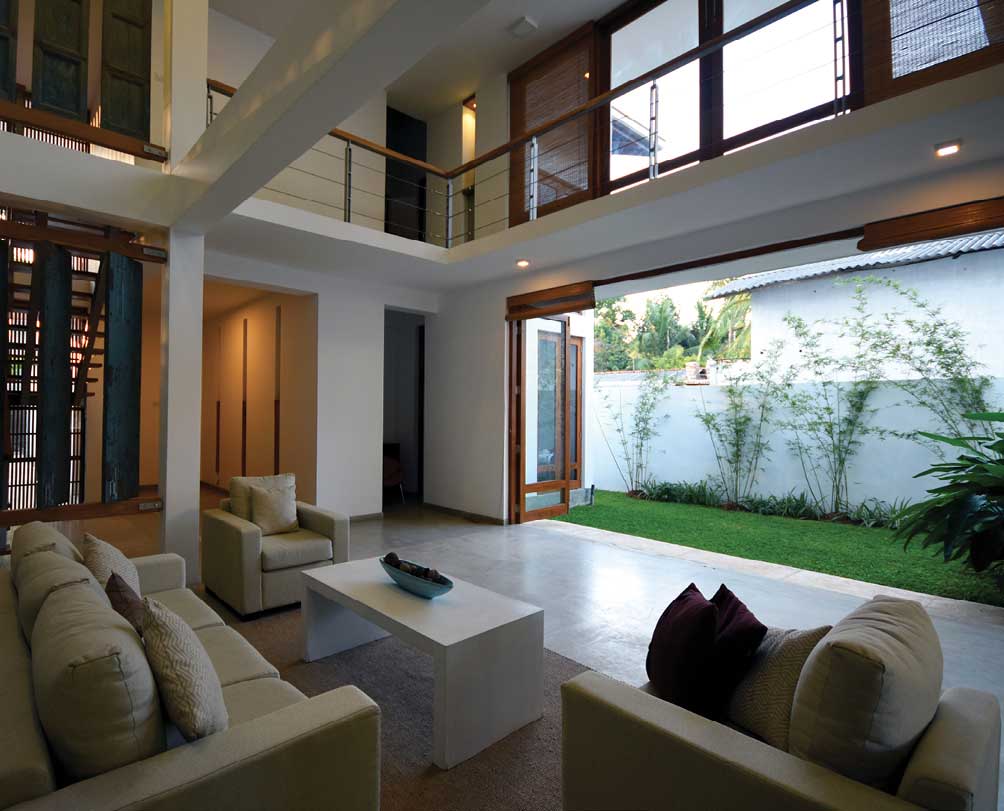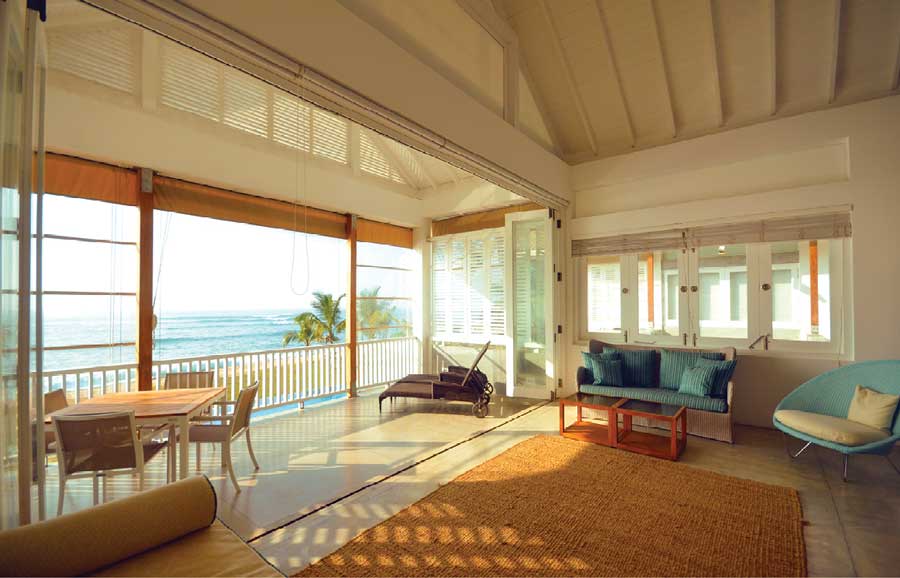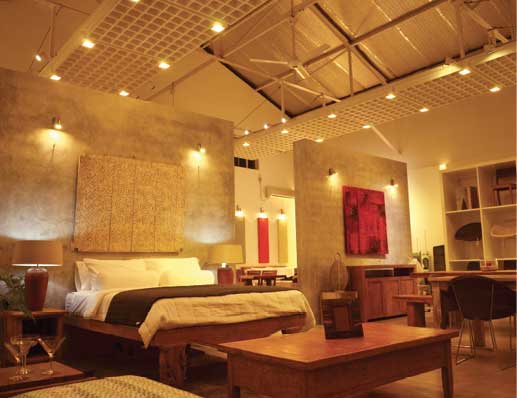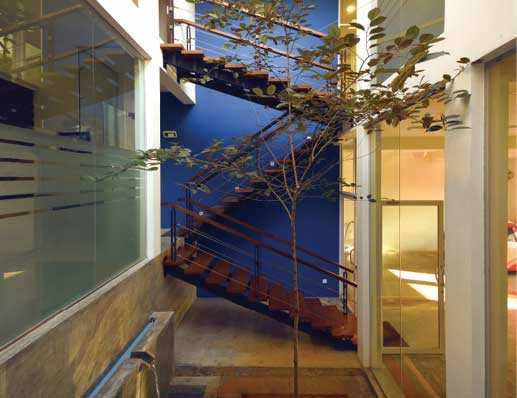A GREENER MATRIX
Designing spaces that integrate the elements
Gayan Herath in conversation with Lashani Ramanayake
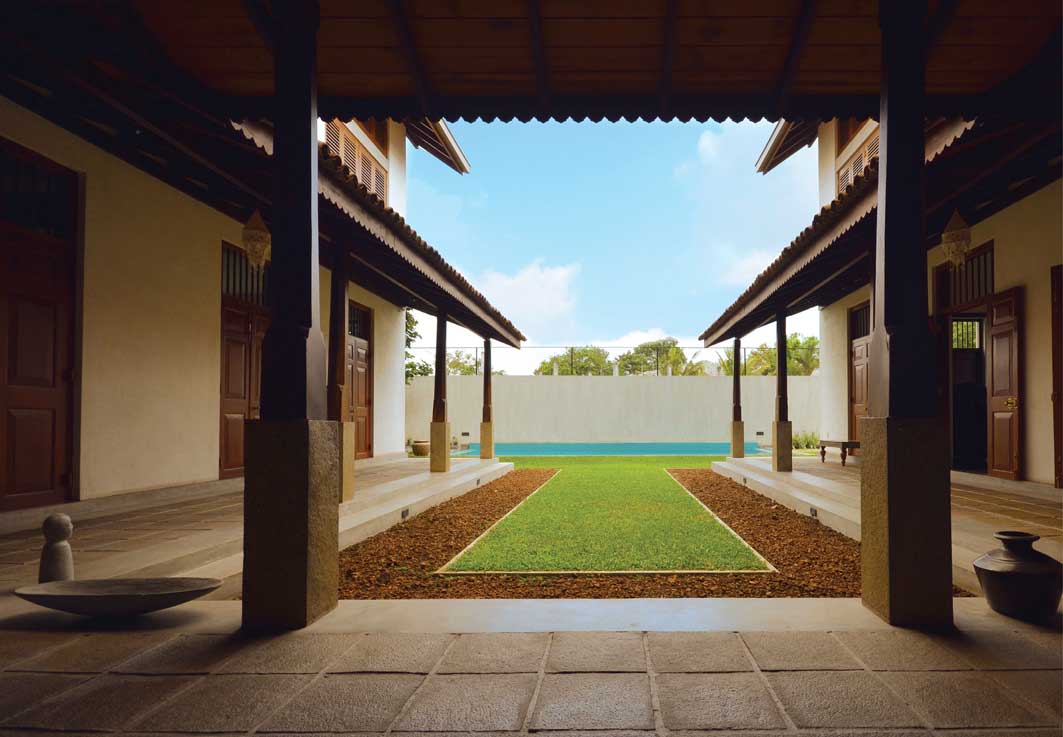
 He credits his inspiration to the visual kaleidoscope of his hometown Kandy and alma maters. Guided by architects Channa Daswatte and Murad Ismail, Gayan Herath’s passion for architecture grew as he worked on the late Deshamanya Geoffrey Bawa’s projects.
He credits his inspiration to the visual kaleidoscope of his hometown Kandy and alma maters. Guided by architects Channa Daswatte and Murad Ismail, Gayan Herath’s passion for architecture grew as he worked on the late Deshamanya Geoffrey Bawa’s projects.
The young professional’s most challenging achievement has been the establishment of his practice and first project – the TZ Tower in Seeduwa. Since he firmly believes that architects need to be socially responsible, Herath creates sustainable buildings that are adapted to the tropics.
Q: How are space, aesthetics and design integral to architecture?
A: Every artist has a medium; and for architects, it’s space. While we can live with or without the arts, space is something we need for living. In the process of creating spaces, we combine solids, voids, colours and various textures to evoke aesthetics.
In architecture, space encompasses the volume of a structure, and contributes to ensuring that a design is aesthetically pleasing as well as suitable to live in.
Q: Has technology impacted the sustainability objectives of architects?
A: The World Green Building Council reported that buildings and construction were responsible for 36 percent of final energy use, and emitted 39 percent of energy related CO2 in 2018.
Following the industrial sector, buildings have the second largest impact on climate change. Therefore, it’s of paramount importance that architects bridge the gap between architecture and sustainability.
One way to achieve this is to introduce technological fixes to reduce building energy consumption – viz. intelligent and green building technologies.
Traditional architecture provides clues for dealing with ongoing climate change.
Natural shading and passive ventilation – as well as the use of traditional, reusable and low energy materials – help reduce the energy demanded by a built environment. It also achieves long-term sustainability from technological and aesthetic aspects, which is vital to the environment.
Q: In your view, can good architecture differ from top design trends?
A: There are significant modern trends in global architecture. However, I believe in good architecture rather than architectural trends since the former is timeless.
Living in a tropical country, we are blessed with two monsoon seasons and year-round sunlight. Therefore, responding to both sun and rain are important for synthesising nature with built environments.
Selecting building materials is vital in any trend or style and in the local context, these should be able to withstand the climate and enhance Sri Lanka’s uniquely sustainable style.
Q: And how do you envision the development of urban spaces in the next five years?
A: With rapid urbanisation, there’s a need for more public urban spaces. So landscapes play a crucial role in the context of greenery to reduce heat gain in urban pockets.
If the country moves to environmentally sustainable city models that focus more on people, we will see more public urban spaces in cities in addition to connective linkages through energy conscious transport.
Designing cities for people must include more shaded pedestrian paths. Moreover, public spaces must be buffered by trees and harmonise with the busy urban character. Indigenous jungle trees should be prioritised over exotic varieties in the landscaping effort.
